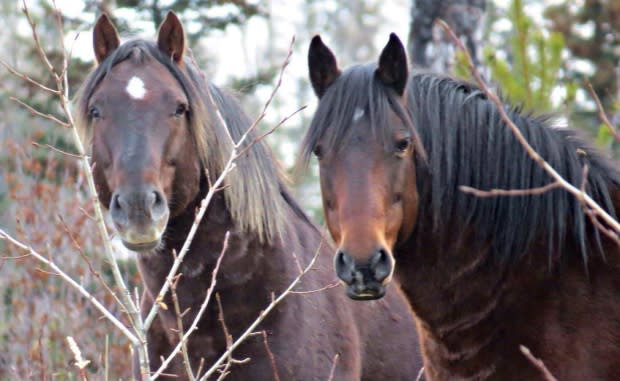Biologist worries government survey of wild horses may lead to cull
A wild horse researcher is concerned a survey of the Chilcotin wild horse population, planned by the Ministry of Forests, Land and Natural Resources and the Tsilhqot'in National Government, may result in a cull.
Wayne McCrory, who has been studying the Chilcotin horses for 15 years, said wild horses have been blamed for overgrazing in the region in the past.
"There's been a lot of scapegoating going over the whole history of the wild horses, which has led to most of them being eradicated," McCrory said,
He estimates somewhere between 600 and 1,000 wild horses live in the Chilcotin.

In an email to CBC, the Ministry of Forests, Land and Natural Resource Operations, said the survey will help resource managers understand the density and distribution of horses in the Chilcotin, which may inform wildlife management decisions in the future.
"This project is also the first step in delivering on the commitment in the Moose Co-Management Agreement between the Tsilhqot'in Nation and B.C. to develop and strengthen data collection for free-roaming horse populations to gain an understanding of their potential impacts on wildlife populations and to support the Tsilhqot'in Nation," the ministry said.
McCrory said the issues with overgrazing that conservationists and ranchers are concerned with in the Chilcotin can be blamed on cattle, logging and hunting.
"It's always easier to point fingers at the more susceptible victims than to look at the real cause of the problem."
Historically, wild horse culls have been used across Canada to manage populations. An Alberta cull in 2015 prompted an independent study by McCrory of how important wild horses are to their respective ecosystems.
"I'm just a little worried they might come up, as they have in Alberta, with increasing numbers and decide because of the overgrazing problems really caused by cattle or the perception the horses are causing the moose declines to try and implement another cull," he said.
"The last one being where they removed about 20 per cent of the Chilcotin wild horse population in 1987 and 1988 and that included pregnant mares and foals being shot on the range."
As concerned as McCrory is over the possibility of a cull, he said he is happy the survey will be conducted.
"It'd be nice to have more data, however unreliable as it is at times, as to how many horses are there today," he said. "We'll see what the outcome is and we'll go on from there."

